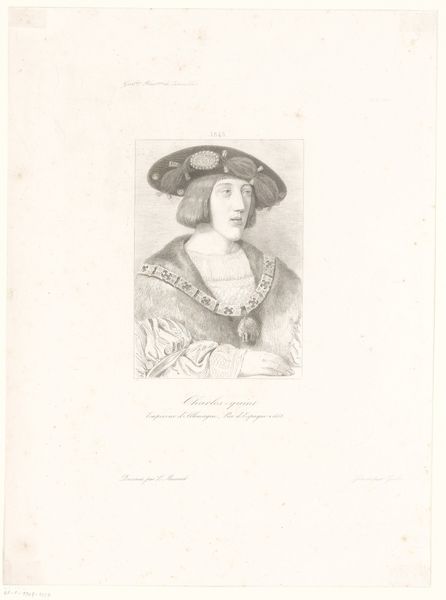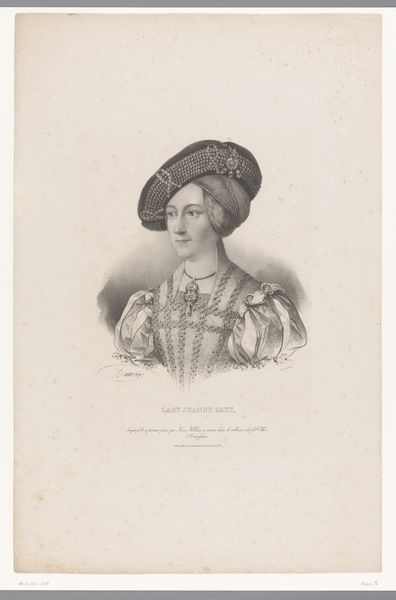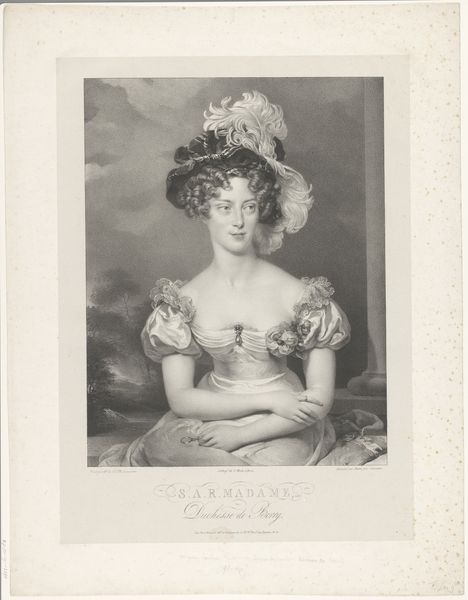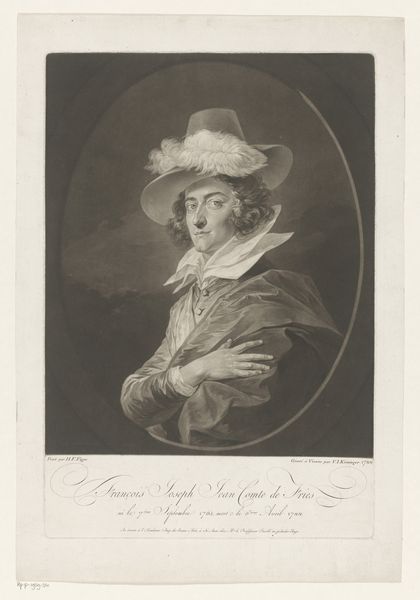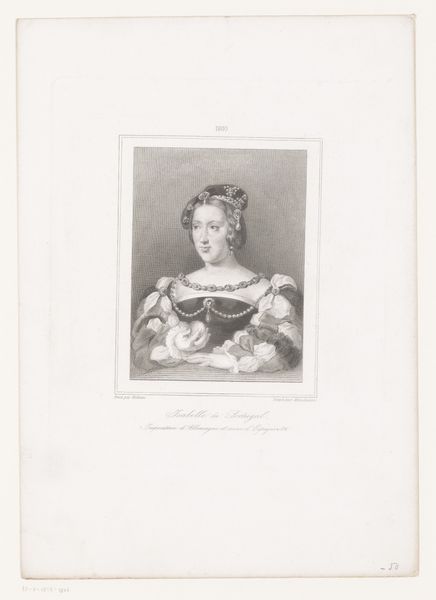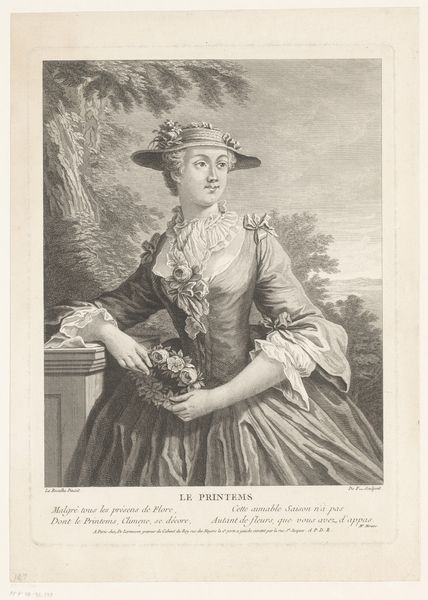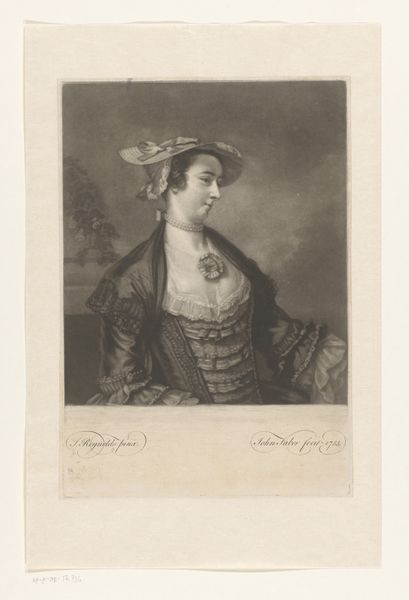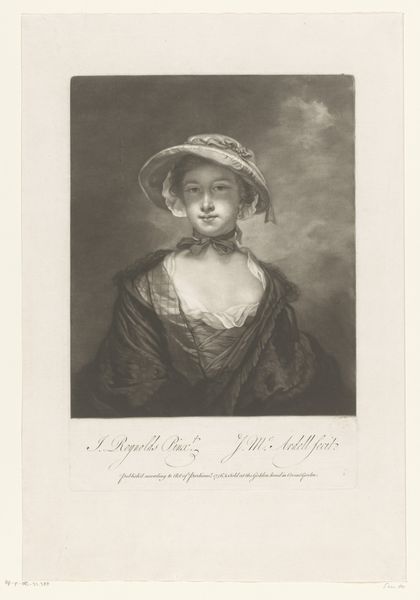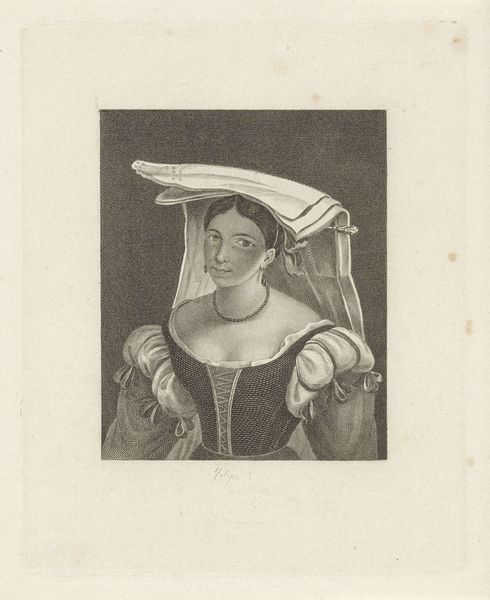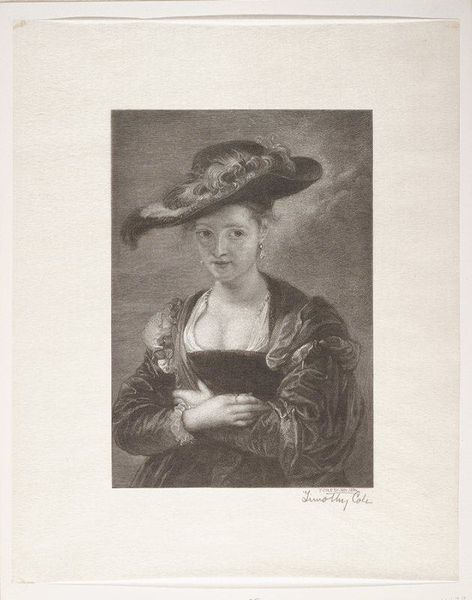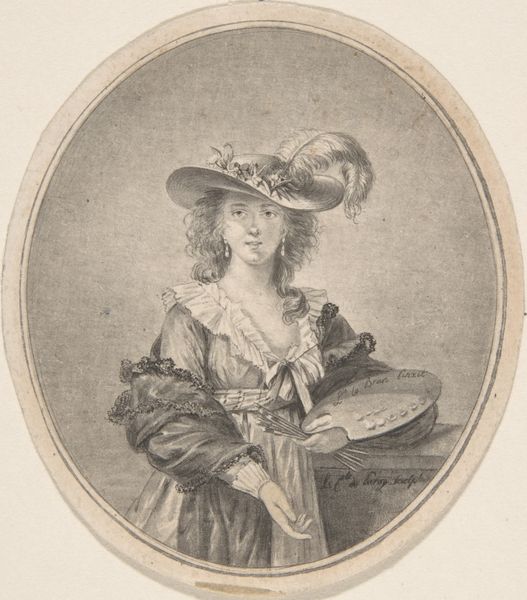
drawing, print, pencil, engraving
#
portrait
#
pencil drawn
#
drawing
# print
#
figuration
#
pencil drawing
#
romanticism
#
pencil
#
line
#
academic-art
#
engraving
Dimensions: height 438 mm, width 320 mm
Copyright: Rijks Museum: Open Domain
Editor: This is "Susanna Fourment met strohoed", or "Susanna Fourment with Straw Hat," from between 1826 and 1839. It's a print, likely from a pencil drawing, and strikes me as very elegant and poised. How would you interpret this work? Curator: I see a fascinating dialogue between materiality and representation. This engraving, derived from a drawing, speaks volumes about the industrialization of art. Consider the labor involved in creating the original image versus reproducing it. It changes the very nature of viewership and ownership. How does the mass production of art impact its cultural value and accessibility? Editor: That's an interesting angle I hadn't considered. It feels more intimate as a drawing but also gains new audiences as a print. What’s significant about the straw hat in terms of its cultural significance at that time? Curator: Indeed! The straw hat itself is a product, linked to specific social classes and modes of production. Was it locally sourced material? An imported commodity? Think of it as a symbol entangled in global trade and fashion economies. The texture, recreated through engraving, mimics the original object but inevitably changes its tactile experience and, arguably, even the wearer's social position through broader availability. It poses interesting questions on the relationship between labour, representation, and social identity. Editor: So it’s less about Susanna Fourment as an individual and more about what the means of production tell us about 19th-century society. I’m beginning to think about this in entirely new ways. Thanks! Curator: Exactly! It is about seeing artistic practice enmeshed in wider systems of material exchange. Viewing it in terms of its production helps contextualize both the work and the period in exciting ways.
Comments
No comments
Be the first to comment and join the conversation on the ultimate creative platform.
